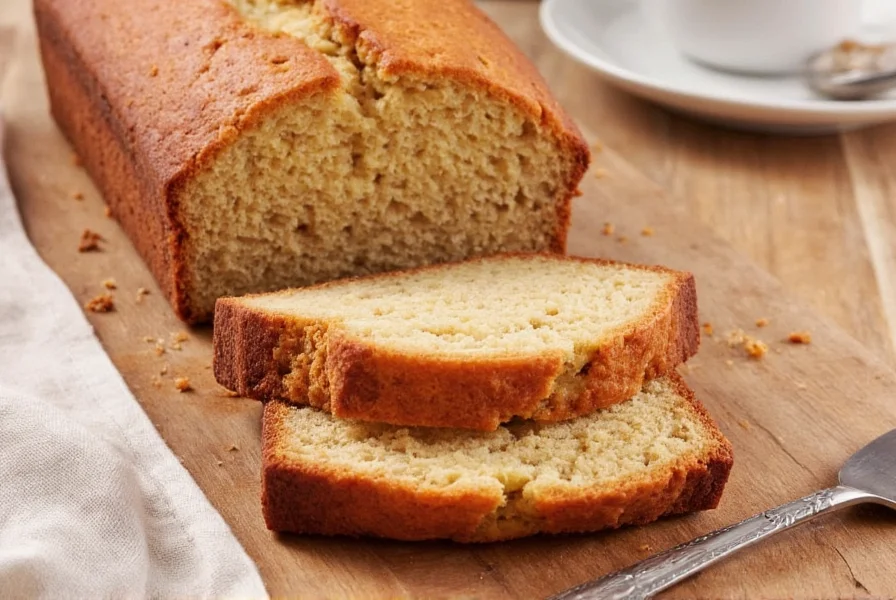Nothing compares to the comforting aroma of cinnamon loaf cake baking in your kitchen. This beloved quick bread combines warm spice with a tender, moist texture that makes it perfect for breakfast, brunch, or dessert. Unlike basic recipes found online, achieving bakery-quality results requires understanding the science behind each ingredient and technique.
The Science Behind Exceptional Cinnamon Loaf Cake
Cinnamon loaf cake's magic happens through careful ingredient interaction. Cinnamon contains cinnamaldehyde, which gives its distinctive flavor but can become bitter if overheated. Using the right amount—typically 1½ to 2 tablespoons for a standard loaf—creates balanced warmth without overpowering. The fat component (butter or oil) carries these flavor compounds, while proper sugar measurement ensures adequate moisture retention without excessive sweetness.
Professional bakers know that the creaming method matters significantly. Creaming butter and sugar for 3-5 minutes incorporates air bubbles that expand during baking, creating the ideal light yet substantial texture. Overmixing after adding flour develops gluten, leading to toughness—always mix wet and dry ingredients just until combined.
Essential Ingredients for Superior Results
Cinnamon quality makes or breaks your loaf. Avoid pre-ground supermarket varieties that lose potency. Instead, use freshly ground Ceylon cinnamon for delicate flavor or Cassia for bolder notes. Store cinnamon in an airtight container away from light to preserve volatile oils.
Flour measurement affects texture dramatically. Spoon flour into your measuring cup then level—it prevents packing that leads to dry, dense cakes. For foolproof results, weigh ingredients: 225g all-purpose flour yields more consistent results than cup measurements.
| Ingredient | Professional Recommendation | Common Mistake |
|---|---|---|
| Cinnamon | 1½-2 tbsp freshly ground | Using old, stale cinnamon |
| Flour | 225g weighed or spooned | Packed measuring cups |
| Fat | ½ cup melted butter or oil | Cold butter chunks |
| Sugar | 1 cup granulated | Substituting all brown sugar |
Step-by-Step Perfect Cinnamon Loaf Cake Recipe
This tested recipe yields a moist, flavorful loaf with a beautiful cinnamon swirl. Follow these professional techniques for guaranteed success:
- Prepare ingredients at room temperature (eggs, buttermilk) for even mixing
- Cream butter and sugar until light and fluffy (3-5 minutes)
- Whisk dry ingredients separately—flour, baking powder, salt, and 1½ tbsp cinnamon
- Create swirl mixture with ¼ cup sugar + 2 tbsp cinnamon + 2 tbsp melted butter
- Alternate adding dry ingredients and buttermilk to wet mixture in three additions
- Layer batter with swirl mixture in greased loaf pan, creating 3 distinct layers
- Bake at 350°F (175°C) for 50-60 minutes until toothpick comes out clean
- Cool completely before slicing to prevent crumbling
Troubleshooting Common Cinnamon Loaf Cake Problems
Dense texture? This usually indicates overmixing after adding flour or expired leavening agents. Always sift baking powder and test for freshness.
Sunken center? Opening the oven door too early causes temperature fluctuations. Use the oven light to check progress during the first 40 minutes of baking.
Dry crumb? Overbaking is the most common culprit. Insert a thermometer—it should read 200-205°F (93-96°C) when done. Alternatively, under-measuring fat or over-measuring flour creates dryness.
Creative Variations for Your Cinnamon Loaf Cake
Elevate your standard cinnamon loaf cake with these professional variations:
- Apple cinnamon loaf cake—Fold in 1 cup finely diced apples and ½ tsp nutmeg
- Cream cheese swirl loaf—Add a layer of sweetened cream cheese between cinnamon swirls
- Gluten-free cinnamon loaf—Substitute 1:1 gluten-free flour blend and add ½ tsp xanthan gum
- Vegan adaptation—Use plant-based butter, flax eggs, and almond milk
For special occasions, top with a simple glaze (1 cup powdered sugar + 2 tbsp milk + ½ tsp vanilla) or a brown butter pecan topping.
Serving and Storage Best Practices
Cinnamon loaf cake tastes best when served at room temperature. For optimal flavor development, wrap cooled loaf in plastic and let it rest overnight before slicing. Properly stored in an airtight container at room temperature, it stays fresh for 3-4 days. For longer storage, wrap tightly in plastic and freeze for up to 3 months—thaw at room temperature before serving.
Frequently Asked Questions
What's the best type of cinnamon for loaf cake?
Ceylon cinnamon offers delicate, complex flavor ideal for subtle spice notes, while Cassia provides stronger, more familiar cinnamon taste. For most home bakers, freshly ground Cassia works best. Avoid pre-ground cinnamon that's lost its volatile oils—store in airtight container away from light.
Why does my cinnamon loaf cake sink in the middle?
Sinking typically occurs from opening the oven too early (before 40 minutes), underbaking, or excessive leavening. Ensure your baking powder is fresh, avoid opening the oven door during initial baking, and test for doneness with a thermometer (200-205°F) rather than just visual cues.
How can I make my cinnamon loaf cake more moist?
For moist cinnamon loaf cake, use buttermilk instead of regular milk, include oil along with butter, and don't overbake. Let the cooled loaf rest overnight wrapped in plastic—this allows moisture redistribution. Adding 2 tbsp sour cream also enhances moisture retention without altering flavor significantly.
Can I make cinnamon loaf cake ahead of time?
Yes, cinnamon loaf cake actually improves with overnight resting. Bake one day, wrap completely cooled loaf in plastic, and let it sit at room temperature. The flavors meld and texture becomes more uniform. For best results, slice just before serving. You can also freeze baked loaves for up to 3 months.
What's the ideal baking temperature for cinnamon loaf cake?
350°F (175°C) is optimal for even baking without over-browning. Lower temperatures (325°F) risk dryness from extended baking time, while higher temperatures (375°F+) cause premature crust formation that restricts rise. Use an oven thermometer to verify accuracy—many ovens run hotter or cooler than indicated.











 浙公网安备
33010002000092号
浙公网安备
33010002000092号 浙B2-20120091-4
浙B2-20120091-4